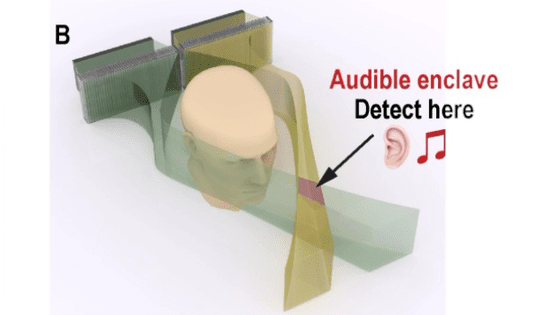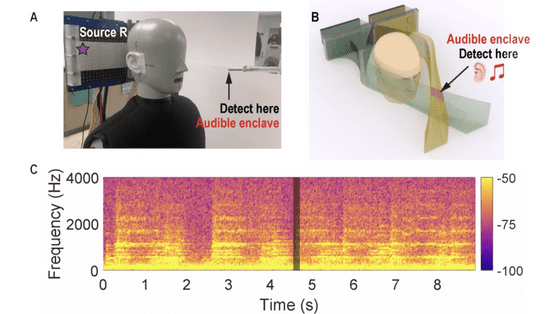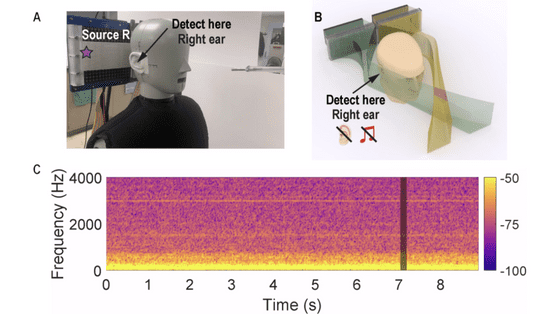A new technology has been developed that uses crossed ultrasound waves to deliver sounds that can be heard by humans to specific locations

A technology has been developed that emits two types of ultrasonic waves that are inaudible to the human ear, bends the sound waves, makes them intersect, and delivers an 'audible sound' only at the point of intersection.
Audible enclaves crafted by nonlinear self-bending ultrasonic beams | PNAS
Researchers created sound that can bend itself through space, reaching only your ear in a crowd
https://theconversation.com/researchers-created-sound-that-can-bend-itself-through-space-reaching-only-your-ear-in-a-crowd-252266
Normally, when two sound waves collide, they combine to form a larger wave, but if the sound waves are strong enough, they can generate a new frequency. For example, when two ultrasound beams of slightly different frequencies overlap, such as 40 kHz and 39.5 kHz, a new sound wave is generated at the frequency difference of 0.5 kHz, or 500 Hz, which is within the range of human hearing. The sound can only be heard at the point where the beams intersect, and the sound outside the intersection remains inaudible to the human ear.
Jia-Xin Zhong and his colleagues at Pennsylvania State University have designed a method to bend ultrasound waves using a special material that manipulates sound waves. Normally, sound waves travel in a straight line unless they are blocked or reflected by something. However, by using a technology called acoustic metasurfaces, it is possible to bend and move ultrasonic beams. This allows the creation of curved 'sound paths' that can avoid obstacles and cross at specific locations.
Click below to watch a video showing the intersection point of ultrasonic waves and how the sound would be perceived by a human ear just before the intersection point.
At the point where the ultrasound waves intersect, the sound can be heard clearly.

However, at the point where the left ear would be, only a very slight sound can be heard.

I couldn't hear anything at all from my right ear.

This technology could be used to enable private voice communication or to play music that only certain people can hear in public places. Zhong and his colleagues cited examples such as 'playing audio guides in art galleries and museums without using headphones' and 'lecturing to students in libraries without disturbing others.'
'This has the potential to transform entertainment, communication, and spatial audio experiences,' Zhong said.
Related Posts:
in Science, Posted by log1p_kr






